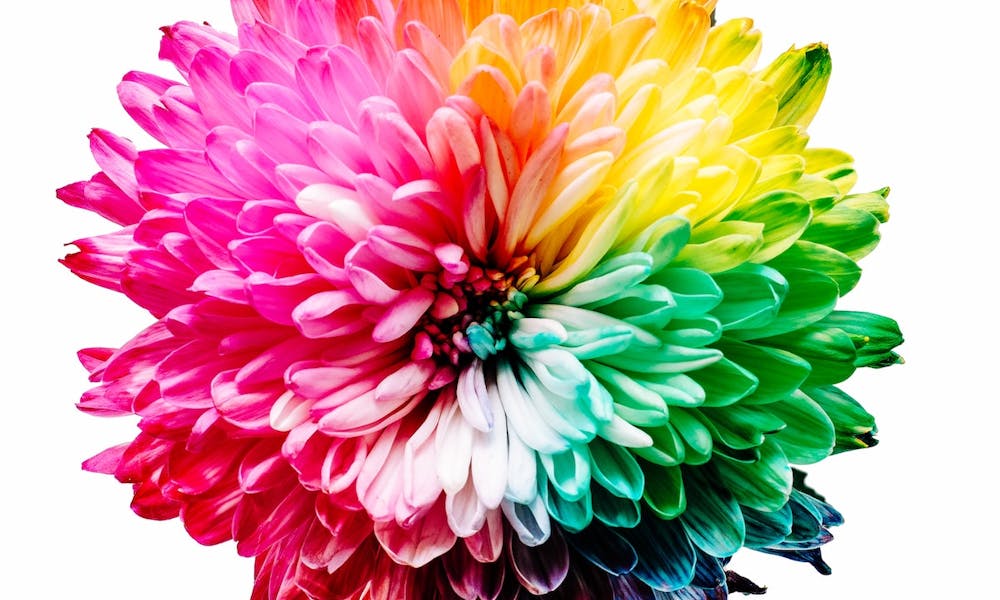MENU
The Function of a Flower: Unveiling Nature’s Masterpiece

Flowers, with their vibrant colors, intricate shapes, and enchanting fragrances, have captivated humans for centuries. Beyond their aesthetic appeal, flowers serve a myriad of essential functions in the plant world. From attracting pollinators to ensuring reproduction and survival, the function of a flower extends far beyond its mere visual splendor. In this article, we delve into the intricate and fascinating world of floral function, exploring the diverse mechanisms and roles that flowers play in the plant kingdom.
The Reproductive Powerhouse: Flower as a Sexual Organ
At its core, the primary function of a flower is reproduction. Flowers are the sexual organs of flowering plants, also known as angiosperms. They are responsible for the production of seeds, ensuring the survival and propagation of the species. The reproductive process of a flower involves several interconnected parts and intricate mechanisms.
Petals and Sepals: Attraction and Protection
Petals, often the most visually striking part of a flower, serve the crucial function of attracting pollinators. Their vibrant colors, patterns, and fragrances act as signals to potential pollinators, such as bees, butterflies, and birds, enticing them to visit the flower. Additionally, petals can provide landing platforms for pollinators and guide them towards the reproductive structures of the flower.
Sepals, on the other hand, are often the outermost part of a flower and serve a protective role. They enclose and protect the developing flower bud, providing support and defense against external threats such as herbivores and harsh environmental conditions.
Stamen: The Male Reproductive Organ
The stamen is the male reproductive organ of a flower, composed of two main parts: the filament and the anther. The filament acts as a stalk, supporting the anther. The anther, located at the top of the filament, contains pollen sacs, which produce and store pollen grains. Pollen is the carrier of male gametes (sperm cells) and plays a vital role in the fertilization process.
Pistil: The Female Reproductive Organ
The pistil, or carpel, is the female reproductive organ of a flower. It consists of three primary parts: the stigma, style, and ovary. The stigma, often located at the top of the pistil, serves as the receptive surface for pollen grains. The style is a slender tube that connects the stigma to the ovary. Finally, the ovary houses the ovules, which are the structures that develop into seeds upon fertilization.
Pollination: The Transfer of Pollen
Pollination is a crucial step in the reproductive process of a flower. It involves the transfer of pollen grains from the anther of a flower to the stigma of either the same flower (self-pollination) or a different flower (cross-pollination). This transfer can occur through various mechanisms, including wind, water, and most commonly, through the help of animal pollinators.
Animal pollinators, such as bees, butterflies, birds, and bats, play a vital role in pollination. As they visit flowers in search of nectar or pollen, they inadvertently collect and transfer pollen grains. The flowers, in turn, provide these pollinators with a reward in the form of nectar, ensuring a mutually beneficial relationship.
Beyond Reproduction: Additional Functions of Flowers
While reproduction is the primary function of flowers, they also serve additional purposes that contribute to the survival and success of plants. These functions go beyond the individual flower and impact the ecosystem as a whole.
Food Source for Pollinators
Flowers provide essential nourishment for pollinators in the form of nectar, a sugary liquid produced by specialized glands called nectaries. Nectar acts as a reward, attracting pollinators and encouraging them to visit flowers repeatedly. By serving as a food source, flowers promote the well-being and survival of pollinators, which, in turn, aids in the pollination of other flowers and the diversity of plant species.
Seed Dispersal
Once a flower has been fertilized and seeds have formed, the dispersal of these seeds is crucial for plant survival and colonization of new areas. Flowers employ various strategies to ensure the dispersal of their seeds over long distances. Some flowers produce fruits that entice animals to consume them, allowing seeds to pass through the digestive system and be dispersed in different locations. Other flowers have adaptations such as winged seeds or mechanisms that eject seeds, enabling them to be carried by wind or water.
Conservation of Genetic Diversity
Flowers play a vital role in maintaining and conserving the genetic diversity of plant populations. Through cross-pollination, the exchange of genetic material between different individuals and plants occurs, increasing genetic variation within a species. This diversity provides plants with the ability to adapt to changing environmental conditions and promotes the overall resilience and survival of the species.
Aesthetics and Cultural Significance
Finally, the beauty and aesthetics of flowers hold significant cultural and emotional value for humans. Flowers have been used in various cultural practices, rituals, and ceremonies for centuries. They serve as symbols of love, celebration, remembrance, and mourning. The enchanting allure of flowers, with their intricate patterns and captivating scents, continues to inspire artists, poets, and writers, evoking emotions and enhancing our connection with nature.
Conclusion
Flowers are not just visually stunning creations of nature; they are marvels of reproductive ingenuity. While their beauty captivates us, their function goes far beyond aesthetics. Flowers play a crucial role in the reproductive cycle of plants, ensuring the production of seeds and the continuation of species. They attract pollinators, provide nourishment, and facilitate the exchange of genetic material. Flowers are not only a vital component of plant survival but also contribute to the diversity and balance of ecosystems. So, the next time you admire a flower, take a moment to appreciate the intricate mechanisms at work and the essential role it plays in the remarkable web of life.
